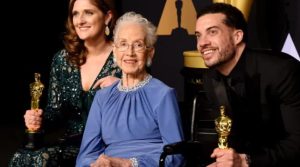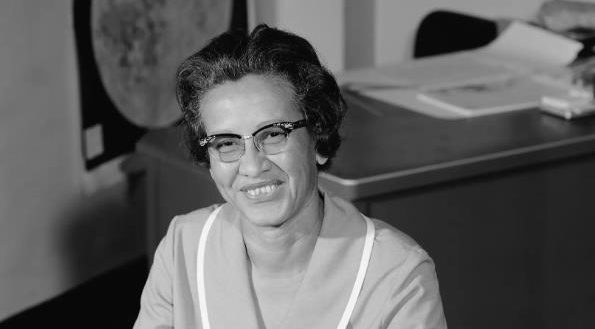Katherine Johnson Cause of Death
Katherine Johnson, a remarkable mathematician whose calculations helped the U.S. achieve monumental milestones in space exploration, passed away on February 24, 2020, at the age of 101. Johnson’s contributions to NASA, particularly during the era of human spaceflight in the 1960s, played a pivotal role in missions like John Glenn’s orbital flight and the Apollo missions.
Her ability to perform complex manual calculations with extraordinary precision earned her recognition as a key figure behind the success of early space expeditions. Her death marked the end of a century-long life dedicated to breaking barriers for African-American women in science, technology, engineering, and mathematics (STEM).
Early Life and Education: A Foundation for Greatness
Katherine Coleman Goble Johnson was born on August 26, 1918, in White Sulphur Springs, West Virginia. From an early age, her exceptional mathematical skills were evident, and her parents made sure she received the best possible education. Since public schooling for African-Americans in her hometown only went up to the eighth grade, her parents sent her to a high school 120 miles away in Institute, West Virginia, where she excelled.

She graduated from high school at 14 and went on to attend West Virginia State College, where she majored in mathematics and French. Johnson’s teachers, including prominent mathematician W.W. Schieffelin Claytor, recognized her talents and encouraged her to pursue a career in mathematics—a field that was, at the time, largely inaccessible to African-American women.
Breaking Barriers at NASA
Katherine Johnson joined NASA’s predecessor, the National Advisory Committee for Aeronautics (NACA), in 1953. She worked as a “computer,” a role given to people (mostly women) who performed complex calculations by hand. Despite the racial and gender discrimination of the era, Johnson quickly stood out for her mathematical prowess. She became part of the Space Task Group, the team responsible for calculating flight trajectories for astronauts.
In 1962, when NASA was preparing for John Glenn’s historic orbit around the Earth, Glenn personally requested that Johnson recheck the calculations made by electronic computers. Glenn’s trust in her skills speaks volumes about her reputation within NASA. This moment not only underscored her importance to the space program but also broke down significant racial and gender barriers.
Key Contributions to Space Exploration
Throughout her career, Johnson made critical contributions to numerous space missions. Her calculations were vital to the success of Project Mercury, the United States’ first human spaceflight program, as well as later Apollo missions. She helped ensure that Alan Shepard’s 1961 flight—the first American in space—was accurately calculated and safe. Johnson’s work on John Glenn’s orbital flight in 1962, in particular, was groundbreaking.
The success of that mission was essential to restoring American confidence in space exploration, especially during the Cold War. She also contributed to the calculations that made the 1969 moon landing possible, ensuring the astronauts’ safe return to Earth. Her ability to solve problems involving celestial navigation and orbital mechanics set a high standard for precision in spaceflight.
Katherine Johnson’s Impact Beyond NASA
Katherine Johnson’s contributions were not just limited to her mathematical expertise. She was a trailblazer in advocating for gender and racial equality in the workplace. By excelling in a male-dominated field, Johnson challenged the stereotypes and limitations placed on African-American women during the 1950s and 1960s.

Her success opened the doors for future generations of women and people of color to enter STEM fields. In 2015, she was awarded the Presidential Medal of Freedom by President Barack Obama in recognition of her work. Her legacy has inspired countless individuals, particularly through the popularization of her story in the book and film Hidden Figures, which highlighted her and her colleagues’ critical roles in the space race.
The Cause of Death: Natural Causes at 101
Katherine Johnson lived a long, accomplished life, and her passing at the age of 101 was attributed to natural causes. Given her advanced age, the exact details surrounding her health in her later years were not widely publicized, but it is known that she passed away peacefully. Johnson’s longevity can be seen as a testament to the resilience and strength she carried throughout her life.
She lived to see the broad recognition of her contributions and the long-overdue celebration of African-American women’s role in NASA’s early history. While she passed away from natural causes, her legacy continues to live on through the generations she inspired.
Legacy and Honors After Her Death
Katherine Johnson’s death marked the passing of a pioneering figure in the history of space exploration, but her legacy continues to inspire. After her death, tributes poured in from around the world, highlighting her incredible contributions to space exploration and civil rights.
NASA renamed the Independent Verification and Validation Facility in West Virginia as the Katherine Johnson Independent Verification and Validation Facility, honoring her work in ensuring the accuracy and safety of NASA missions. Schools, scholarships, and buildings have been named after her, reflecting her influence in education and STEM advocacy. Her story remains an integral part of NASA’s history, and she is remembered as a symbol of perseverance and brilliance.
How “Hidden Figures” Brought Her Story to the World
Although Katherine Johnson had been recognized within NASA for her critical role in space exploration, it wasn’t until the publication of Hidden Figures by Margot Lee Shetterly in 2016 that her story became widely known. The book, followed by the 2016 film adaptation, focused on Johnson and her colleagues, Mary Jackson and Dorothy Vaughan, who were African-American women mathematicians working at NASA during the Space Race.

Hidden Figures brought their untold stories to a mainstream audience, highlighting the racial and gender obstacles they overcame. The film’s success introduced Katherine Johnson to a global audience, immortalizing her contributions. Johnson herself was able to witness the film’s impact, attending the 2017 Academy Awards alongside the cast and crew of the movie.
Johnson’s Advocacy for Women and Minorities in STEM
Beyond her groundbreaking work at NASA, Katherine Johnson was an advocate for greater representation of women and minorities in science, technology, engineering, and mathematics (STEM). She understood the barriers she had faced and sought to ensure that future generations would have fewer obstacles. Johnson frequently spoke at schools and universities, encouraging young women and African-Americans to pursue careers in STEM fields.
She emphasized the importance of education, resilience, and determination. Her life and achievements have become a beacon of hope and motivation for individuals from underrepresented communities who aspire to break into these fields, reinforcing the belief that talent and hard work can overcome systemic barriers.
Personal Life: A Strong Foundation
Katherine Johnson was married twice and had three daughters. Her first husband, James Goble, died of a brain tumor in 1956. She remarried in 1959 to James Johnson, a U.S. Army officer, with whom she shared a long and happy marriage until his death in 2019.
Her personal life, though marked by tragedies like the loss of her first husband, was filled with love and support. Johnson often credited her family for providing the stability and encouragement she needed to pursue her demanding career. Her daughters, Joylette, Katherine, and Constance, have spoken about how their mother remained humble despite her incredible achievements and maintained a deep commitment to her family.
A Life Well Lived
Katherine Johnson’s life was one of extraordinary accomplishment, marked by perseverance, brilliance, and a commitment to excellence. She played a pivotal role in some of NASA’s most significant achievements, including the first American space flights and the Apollo missions to the moon.
Her contributions helped shape the course of space exploration and set a high bar for future generations of scientists and mathematicians. Her advocacy for gender and racial equality further cemented her status as a trailblazer. Even in her final years, Johnson remained a source of inspiration, showing that barriers can be broken with hard work, passion, and a commitment to what is right.
Remembering Katherine Johnson
Katherine Johnson’s death may have marked the end of her life, but her legacy continues to inspire people around the world. Her remarkable journey from a small-town girl with a passion for math to one of NASA’s most respected mathematicians is a story of triumph over adversity. She leaves behind a legacy not only in space exploration but also in the fight for equality and representation in STEM fields.

As we remember Katherine Johnson, we honor her for her contributions to science and her role in shaping the future for women and minorities in mathematics, engineering, and beyond. Her life reminds us that determination, intelligence, and courage can truly change the world.
FAQs on Katherine Johnson Death
What happened to Katherine Johnson when she died?
Katherine Johnson passed away on February 24, 2020, at the age of 101. She died peacefully of natural causes after living a long and impactful life. Tributes poured in from NASA, the scientific community, and admirers worldwide to honor her incredible contributions to space exploration and her role in breaking racial and gender barriers. Her death marked the end of a life that had shaped not only the history of spaceflight but also the future of women and minorities in STEM fields.
Are any of the “Hidden Figures” still alive?
As of 2024, none of the original “Hidden Figures”—Katherine Johnson, Dorothy Vaughan, or Mary Jackson—are still alive. Katherine Johnson was the last of the three to pass away in 2020. Dorothy Vaughan died in 2008, and Mary Jackson passed away in 2005. Their legacies, however, continue to inspire future generations through the book and movie Hidden Figures, as well as through their groundbreaking work in mathematics and engineering at NASA during the Space Race.
Did John Glenn ever meet Katherine Johnson?
Yes, John Glenn and Katherine Johnson did meet, and their professional interaction was significant. Glenn trusted Johnson’s calculations so much that he requested she personally verify the numbers for his 1962 orbital flight, despite the availability of electronic computers.
Did Katherine Johnson have kids?
Yes, Katherine Johnson had three daughters. Her first marriage was to James Goble, with whom she had Joylette, Katherine, and Constance. After James Goble passed away in 1956, Katherine later married James Johnson in 1959, though they did not have children together. Her daughters have often spoken about their mother’s dedication to both her career and family, sharing stories of how she balanced being a trailblazer at NASA with raising her children.
Featured Image Credits: The Newyork Times










